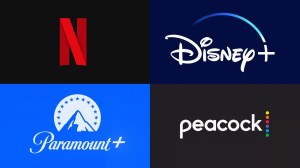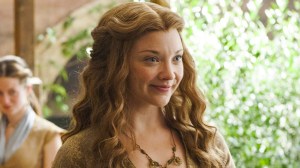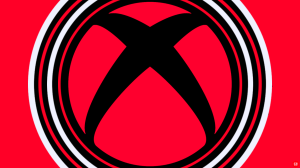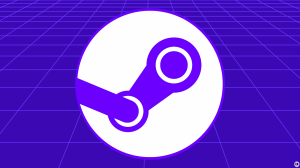The four heroes of light and the magic crystals jump to the Nintendo Switch in Bravely Default II, the latest installment of the retro-inspired JRPG series helmed by Square Enix producer Tomoya Asano. Despite being the third installment of the series, it bears the title Bravely Default II. That’s part of Asano’s attempt to overshadow the poorly received direct sequel to the original Bravely Default, Bravely Second: End Layer. Truthfully, the title hides an even more extended lineage. Asano first conceived Bravely Default as a sequel to Final Fantasy: The 4 Heroes of Light, a standalone game inspired by the Asano-produced 3D remakes of Final Fantasy III, followed by Final Fantasy IV. In this way, Bravely Default II is spiritually the sixth installment in a series that began with remaking an NES Final Fantasy game. That lineage is apparent in its successes and its failures.
Videos by ComicBook.com
Bravely Default II wears Final Fantasy’s influences on its sleeve, borrowing spell names and other conventions, but most notably its job system. There’s also the score provided by REVO, who scored the original Bravely Default. REVO’s work is reminiscent of Nobuo Uematsu’s on Final Fantasy, with adventurous melodies for travel, tender strings for touching moments, and rock and roll for combat.

The game presents itself as an alternative Final Fantasy experience for fans who feel the main series lost its way when it started implementing more sci-fi elements and then gave in to the advent of 3D graphics. The game’s story takes place in a Euro-medieval world filled with magic, monsters, and a tyrant, Adam, threatening to throw the balance of power off its tilt by stealing the four crystals of light. Players will explore this world as the heroes, visiting cities rendered lushly with a watercolor style that makes them appear as if from a storybook.
Plot beats unfold through cutscenes that use 3D models rendered in a simplistic, chibi style, looking akin to Precious Moments figurines. Conversations between these figures take place in cutscenes on a 2D plane, giving them the feel of a puppet show.
The plot is run-of-the-mill old-school Final Fantasy stuff. The bad guy wants the crystals, and the heroes have to travel the world via the overworld map in their quest to get them back. They’ll also plunge into dungeons with unremarkable environment design, which, combined with the lack of a minimap, makes it easy to get turned around while dealing with the considerable monster population. Those monsters are visible to attack or avoid, though players will want to fight almost every enemy they see if they want to keep up with the game’s grinding pace.
The heroes are endearing enough that they don’t wear out their welcome over the scores of hours spent with them, and the voice acting is strong all-around, despite the seemingly random assortment of character accents. The plot is littered with allusions to climate change as the heroes deal with changing weather patterns, unusual animal migrations, and water shortages in response to the imbalance caused by Adam’s lust for control and power. It also includes some surprisingly relevant villain ideas, such as a self-absorbed artist willing to kill and ruin lives for their brilliant vision. The game doesn’t have much to say about these topics, but their presence is notable nonetheless.
There are more than 20 jobs for players to unlock and level up, and each character can equip two while also having five independent passive ability slots. That opens up many customization options, especially for those willing to grind a job to the maximum level to unlock the one passive ability they plan to use. The opposite side of that coin is that the earlier you find a build you enjoy, the less you have to look forward to as the game progresses.

Bravely Default II uses an updated version of the “Brave Point” system introduced in the original Bravely Default. The system allows players to spend points to take up to four actions on a single turn, delaying their next turn in accordance, or bank them for higher defense and to use at a more opportune time. Against average dungeon-dwelling monsters, it’s easy enough to go wild on the opening turn and wipe out most if not all of the enemies. During the game’s challenging boss battles, players will have to be more judicious, or their foe — also capable of using the Brave Point system — will level the party before they have a chance to respond. In a devious way, the system micro-weaponizes the fundamental truth behind all JRPGs, which is that time equals power.
At first glance, the combat system seems to take some inspiration from Persona games. Monsters are weak against certain weapons or elements, and failing to exploit those weaknesses will prolong battles to a potentially fatal extent. Hitting a monster’s weakness does some extra damage but hardly has as much impact as knocking a monster down in a Persona game. Bravely Default II also lacks an “all-out attack” style finisher to cut rote battles short, mitigated somewhat by the ability to raise or lower the speed of combat with a single button touch, which alleviates some of the tedium. Still, Bravely Default II‘s battles can often turn into something like a staring match as both player and opponent standstill while waiting for Brave Points to accrue or for the other to blink first and leave an opening to attack.
Taken as a whole, Bravely Default II plays like the 3D remake of a 16-bit JRPG that never existed, but it misses something important. Games like Pillars of Eternity and Streets of Rage 4 play the way fans remember games of the genre playing, and memory has a way of editing out the annoying bits. Bravely Default II does not. It’s aggressively grind-heavy and repetitive in precisely the ways that the games that inspired it often were. The battles are not interesting enough to make the leveling process anything but a necessary evil for those hoping to keep pace with the game’s challenges. At 60+ hours long, it will test all but the most dedicated retro JRPG game lover’s patience. If you are such a dedicated JRPG fan, you will undoubtedly find a lot to enjoy and appreciate in Bravely Default II. If you’re not, Bravely Default II will do little to make you a believer.
Rating: 3 out of 5
Bravely Default II is on sale now for Nintendo Switch. The publisher provided a review code for this review, and it was reviewed on a base model Nintendo Switch.









